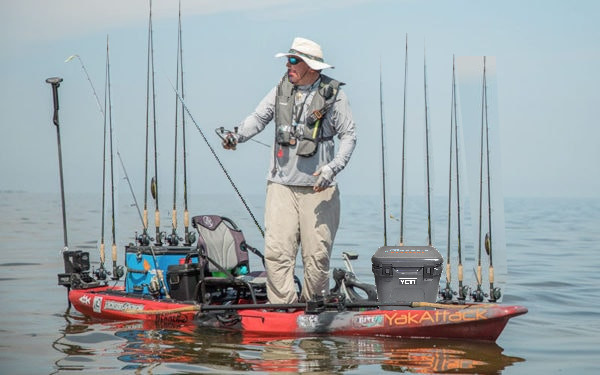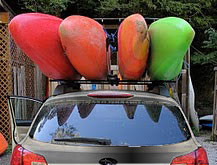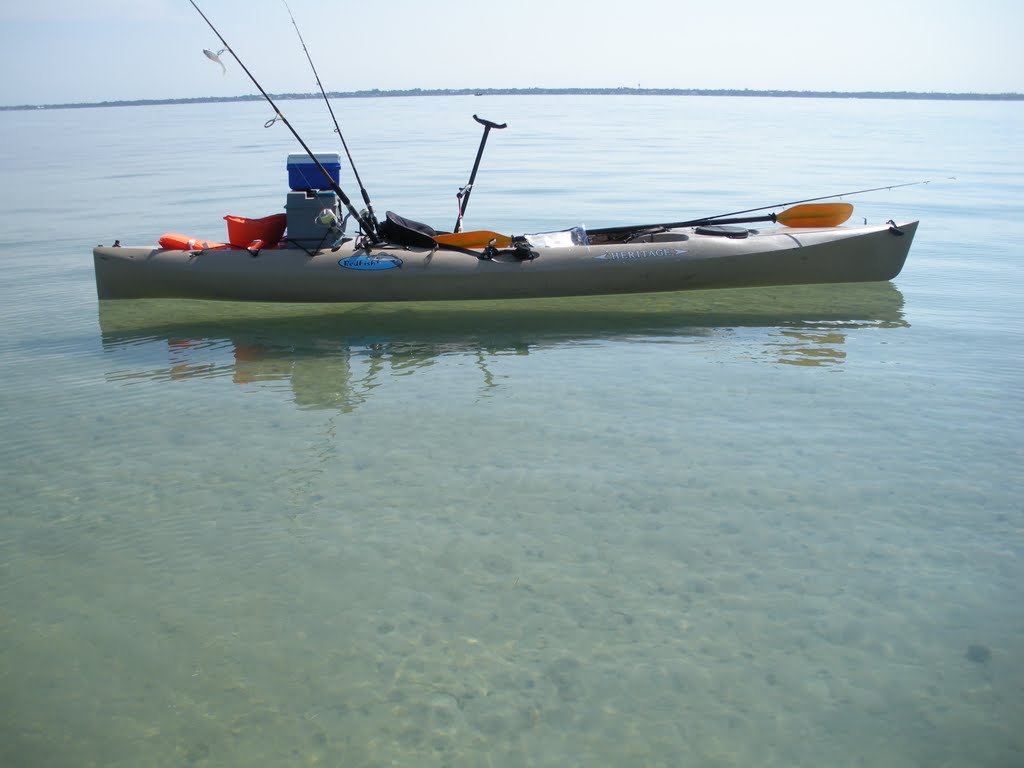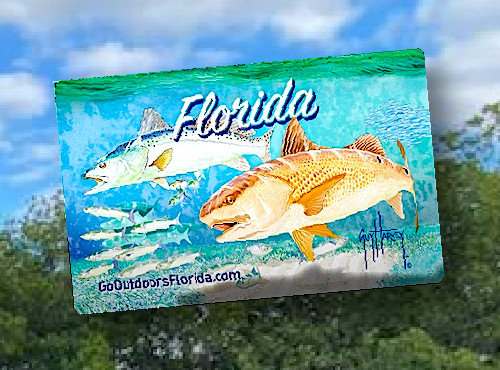The characteristics of an inshore fishing rod include the rod length, power, action, and material (Table-1). The length of the rod impacts the distance and accuracy of your cast and is part of how much leverage you have when fighting a fish. The power refers to the amount of force needed to bend the rod, and it determines the rod’s ability to handle different types and sizes of fish. The action describes the flexibility of the rod, and it affects the sensitivity and responsiveness of the rod. Finally, the material used to make the rod affects its strength, weight, and sensitivity. Understanding how each of these components affects the performance of the rod is essential to selecting the right inshore fishing rod for your needs.
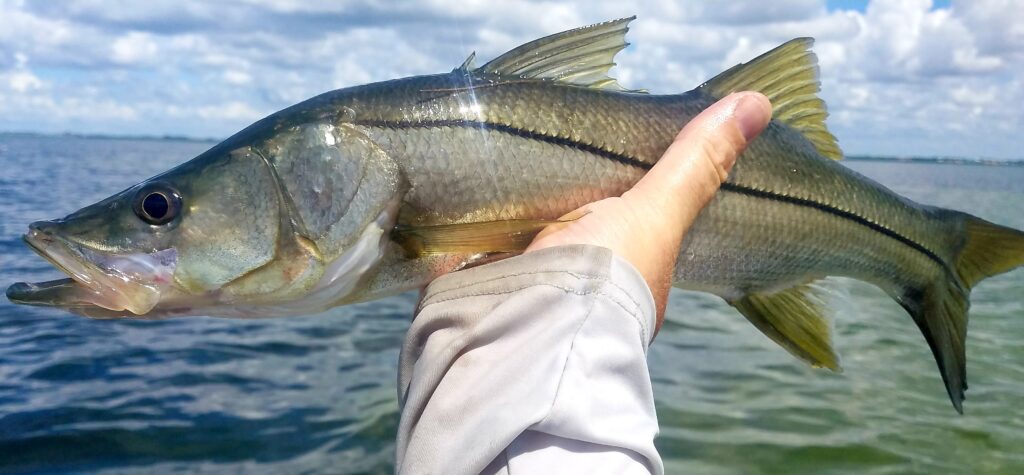
| Fishing Rod Attribute | Example | Comments |
|---|---|---|
| Length | 6’6″, 7’0″, 7’6″, 8’0″, 8’6″, 9’0″ | Short = Accurate; Long = Far Casts |
| Power | Light, Medium-Light, Medium, Medium-Heavy, Heavy, Extra-Heavy | Heavy = Stiff |
| Action | Fast, Moderate-Fast, Medium, Slow, Moderate, Fast | How the rod bends. eg From the base, middle or tip. |
| Material | Graphite, Fiberglass, Graphite/Fiberglass Blend, Graphite, Carbon Fiber, Composite | Strength per gram |
Fishing Rod Length
Each attribute of an inshore fishing rod can have a significant impact on its performance. The length of the rod, for example, affects the casting distance and accuracy, as well as the leverage you have when fighting a fish. A longer rod is generally better for longer casts and bigger fish, while a shorter rod is more maneuverable and better suited for fishing in tight spaces.
Fishing Rod Power
The power of the rod is another critical component to consider. The power refers to the amount of force required to bend the rod, and it determines the rod’s ability to handle different types and sizes of fish. A rod with a higher power rating is more suitable for larger, stronger fish, while a lower power rating is better for smaller fish.
Fishing Rod Action
Tip: Properly loading your rod during a cast will maximize your distance. Matching your rod’s action with the size of your bait will give you the best results.
@yakfishin365
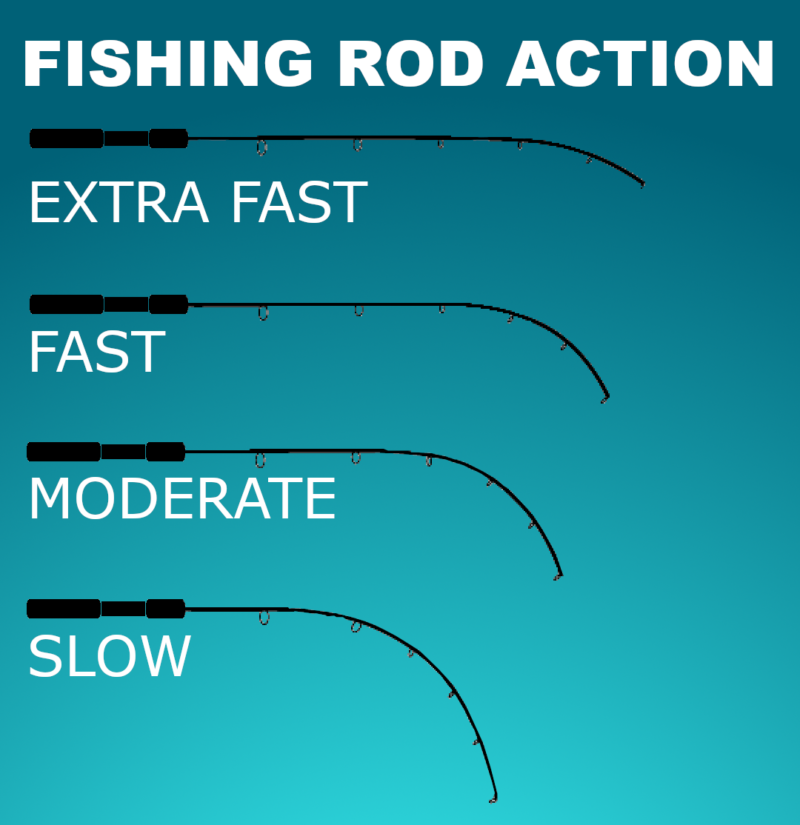
The action of the rod is also essential to consider. This describes the flexibility of the rod and how it bends under pressure. A fast-action rod bends primarily at the tip, while a slow-action rod bends throughout its length. A fast-action rod is more sensitive and responsive, making it better for casting accuracy and hook setting, while a slow-action rod is better for fighting fish and provides a more forgiving casting experience.
Fishing Rod Material
Finally, the material used to make the rod is another factor to consider. Different materials have different strengths, weights, and sensitivities. For example, graphite rods are lightweight and sensitive, making them ideal for detecting bites, while fiberglass rods are more durable and can handle heavier loads. Many think the more money you spend on high-end materials the better the rod. Technically this could be true however some of the most expensive rods are also the least durable making snapping a $1500 G-Loomis by slapping it on the water a thing, while the $50 ugly stick can often survive getting shut in the truck door. A good rule is to buy the lightest rod you can afford understanding that you want to get materials that also match how hard you treat your gear.
TIP: Bring your reel to the store when buying a new rod. Ask if they have an area you can make a few tests casts. Because fishing is so much about feel, making 2-3 casts between a few rods will quickly help you make your choice.
@yakfishin365
Consider the species of fish you are targeting
Choosing the right inshore fishing rod depends on the species of fish you are targeting. Different fish have different characteristics, such as size and fighting strength, which require specific rod components. For example, a redfish is a strong fish that requires a medium to heavy power rod to handle, while a speckled trout is a lighter fish that can be caught on a lighter power rod.
Consider the fishing location and conditions
The fishing location and conditions are also important factors to consider when choosing an inshore fishing rod. Factors such as water depth, current, and the presence of structure or cover can all affect the type of rod needed. Fishing around structure calls for a powerful rod that will let you use stronger lines, bigger baits with enough backbone to pull yourself free. Fishing mangrove tunnels that are skinny a shorter rod is going to be much easier to use. Fishing from shore using a 7.5’+ rod is going to give you the longest casts.
Determine your personal preferences and fishing style
Your personal preferences and fishing style are also crucial to choosing the right inshore fishing rod. For example, some anglers prefer a fast-action rod because it allows for better accuracy and sensitivity when casting and detecting bites. Other anglers may prefer a slower-action rod because it provides a more forgiving casting experience and is better suited for fighting fish because the bend in the rod acts like a shock absorber and helps keep constant pressure on the line so the hook doesn’t get thrown.
How to match the components of the rod to the fishing situation
When choosing the right inshore fishing rod, it’s important to consider your preferred casting distance. This will vary depending on the type of inshore fishing you’ll be doing. If you’re fishing in clear shallow waters, you may not need to cast very far. However, if you’re fishing in deeper or murkier waters, you may need to cast further to reach the fish. If you are targeting a larger, stronger fish, you will need a rod with a higher power rating and a fast or medium-fast action. Lighter lures require a more sensitive rod, while heavier lures need a stronger, heavier rod.
In addition, the type of fish you’ll be targeting is an important consideration. Different species of fish have different behaviors, habitats, and fighting styles. Fishing reef fish in deep water requires something with a backbone (heavy power) and forgiveness (Slower Action). Fishing skinny grass flats require extra long casts and quick hooksets. So a long fast action rod will set you up for success.
Inshore Fishing Rod Types
Spinning rods are a popular choice for inshore fishing due to their versatility and ease of use. They can be used with a variety of lures and baits and are suitable for catching a wide range of inshore fish species. You can identify a spinning rod by the round rod grips.
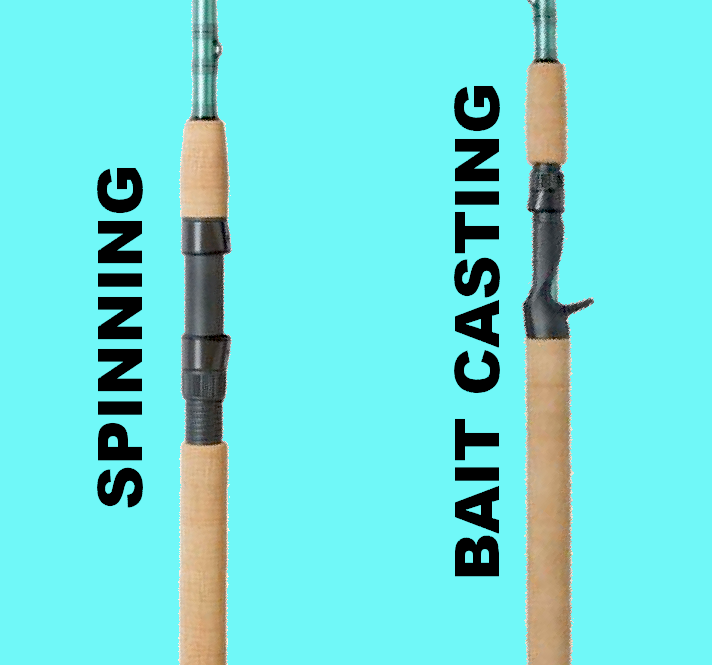
Baitcasting rods are another type of inshore fishing rod. They are designed for casting heavier lures and baits with greater accuracy and distance, making them a popular choice for targeting larger inshore fish species such as redfish or snook. They also pair well with a baitcasting reel. You can identify a casting rod by the pistol handle or thumb hook on the grip.
Lastly, fly rods are a specialized type of inshore fishing rod designed for fly fishing. They are lightweight and designed to cast delicate flies and lures with precision, making them ideal for targeting inshore species such as bonefish or tarpon. Fly rods deserve their own article but wanted to include them here because fly rods have the same attributes as conventional rods.
By understanding the features and benefits of each type of inshore fishing rod, you can choose the one that is best suited for your preferred fishing style and target species.
Tips for Maintaining Your Inshore Fishing Rod
Investing in a high-quality inshore fishing rod can significantly enhance your fishing experience. To ensure your rod lasts as long as possible and continues to perform at its best, it’s essential to take care of it properly. Here are some tips for maintaining your inshore fishing rod:
- Rinse your rod with freshwater after every use Saltwater can be corrosive and damaging to fishing equipment. After every use, rinse your rod with freshwater to remove any salt and dirt that may have accumulated.
- Dry your rod thoroughly After rinsing your rod, dry it thoroughly to prevent any rust or corrosion from developing. Use a soft cloth to wipe down the rod and ensure all components are dry.
- Store your rod properly When storing your rod, avoid placing it in direct sunlight or areas with high humidity, as this can cause damage over time. Store your rod in a dry, cool, and dark place, such as a closet or garage.
- Check your rod for damage regularly Regularly inspect your rod for any signs of damage, such as cracks or chips in the guides or the rod blank. If you notice any damage, have it repaired as soon as possible to prevent further damage.
- Use a rod sleeve or case Using a rod sleeve or case can help protect your rod during transportation and storage. It can also prevent scratches and other types of damage that can occur when the rod is not in use.
By following these tips, you can help extend the life of your inshore fishing rod and ensure it continues to perform at its best for years to come.
Final Thoughts
Choosing the right inshore fishing rod is essential for any angler looking to maximize their success on the water. By understanding the different attributes of inshore fishing rods, such as length, power, action, and material, you can select the best option for your needs. Below is our preferred set ups. As an advocate for less is more we keep our rod count down to 2-3 rods depending on what and where we are fishing.

If the area has large flats surrounded by docks and bridges I will bring my power set up, if there are going to be shallow mangroves and oyster bars where sight casting weedless twitch baits I will bring more of a finesse set up. Of course every angler is going to have their own preferences based on how and what they like to fish. There are no real wrong answers but keeping within these guidelines will help you dial in what works for you quickly. Good Luck and Tightlines!

